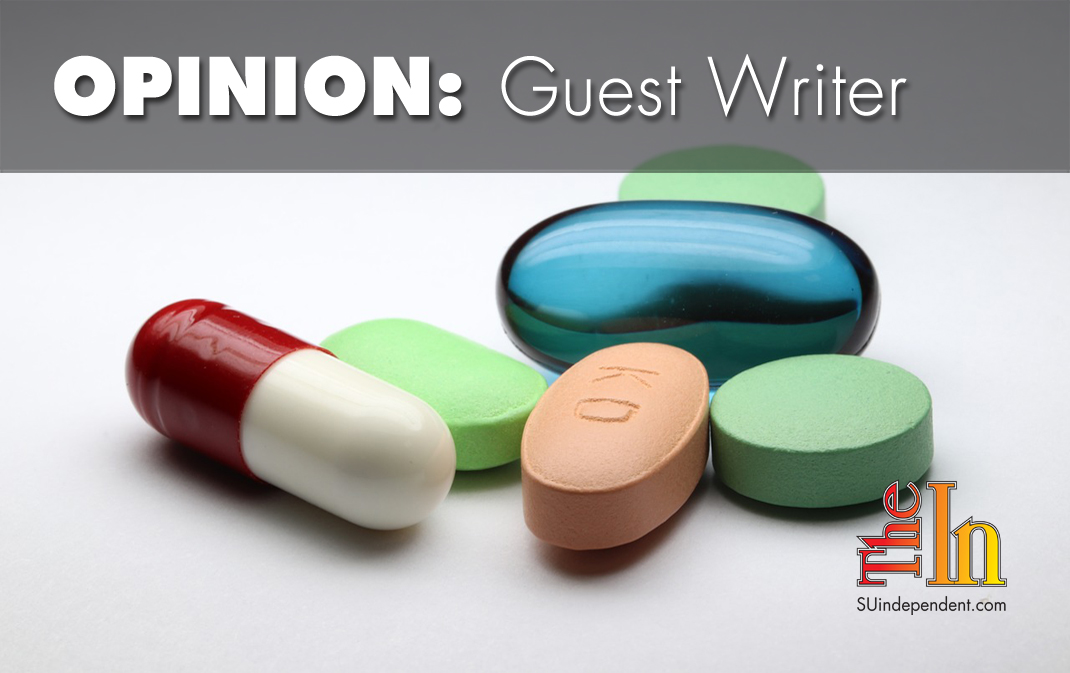
Drug prices too high? Blame the middlemen
By Merrill Matthews
President Trump recently complained that pharmaceutical companies have “rigged the system against American consumers” by keeping drug prices too high.
Americans often pay too much at the pharmacy counter for brand name drugs. But insurers and other middlemen in the drug supply chain bear much of the responsibility.
Actually, drug spending in the United States is slowing. Retail prescription drugs represent 10 percent of the $3.5 trillion spent on health care in 2017.
One reason for the decline is that nearly 90 percent of prescriptions in the United States are less-expensive “generic” copies of brand name drugs.
Another reason is that pharmaceutical companies discount the “list price” of their drugs. These manufacturer discounts have more than doubled in value over the last few years, rising from $59 billion in 2012 to $127 billion in 2016.
Even with manufacturer discounts, patients aren’t feeling relief. That’s because insurance companies and middlemen in the drug supply chain have enjoyed the lion’s share of the savings.
Those middlemen are “pharmacy benefit managers,” or PBMs. PBMs extract discounts from pharmaceutical firms and pass part of the savings to insurers that agree to add the discounted drug to the list of drugs they’ll cover.
Insurers could use their discounts to reduce the financial burden borne by patients. But they often profit from those discounts even as they find new avenues to charge beneficiaries.
The growth of prescription drug tiers is a prime example. Whereas insurance firms used to charge one co-pay for generics and a slightly larger one for brand-name medications, they’ve recently added a third and even a fourth tier, with much higher co-pays for some innovative drugs.
In 2017, 83 percent of Americans insured by their employers had plans with at least three prescription drug tiers. The average co-pay for the highest tier was $110.
Co-insurance is another example. Under these arrangements, beneficiaries pay a fixed percentage of a drug’s price at the point of sale. Co-insurance rates are often based on a drug’s initial list price, not what the insurer actually pays after the discounts secured by PBMs.
Then there’s the pharmacy “gag clause,” in which PBM contracts prohibit pharmacists from telling a customer the out-of-pocket price for a drug was less than the person’s co-pay.
I ran into this personally a few years back. My co-pay for a generic drug would have been $15. I asked the pharmacist how much it would cost if I paid out of pocket. “$11.50,” she replied. She was likely contractually prohibited from volunteering the information, but not from answering my question.
Fortunately, Congress recently passed legislation ending this practice. That’s a great start, but there’s more to do.
The president needs to shine a light on middlemen and insurer practices. They are the ones who decide what patients actually pay for the latest medicines.
Merrill Matthews is a resident scholar with the Institute for Policy Innovation in Dallas.
The viewpoints expressed above are those of the author and do not necessarily reflect those of The Independent.
How to submit an article, guest opinion piece, or letter to the editor to The Independent
Do you have something to say? Want your voice to be heard by thousands of readers? Send The Independent your letter to the editor or guest opinion piece. All submissions will be considered for publication by our editorial staff. If your letter or editorial is accepted, it will run on suindependent.com, and we’ll promote it through all of our social media channels. We may even decide to include it in our monthly print edition. Just follow our simple submission guidelines and make your voice heard:
—Submissions should be between 300 and 1,500 words.
—Submissions must be sent to editor@infowest.com as a .doc, .docx, .txt, or .rtf file.
—The subject line of the email containing your submission should read “Letter to the editor.”
—Attach your name to both the email and the document file (we don’t run anonymous letters).
—If you have a photo or image you’d like us to use and it’s in .jpg format, at least 1200 X 754 pixels large, and your intellectual property (you own the copyright), feel free to attach it as well, though we reserve the right to choose a different image.
—If you are on Twitter and would like a shout-out when your piece or letter is published, include that in your correspondence and we’ll give you a mention at the time of publication.



